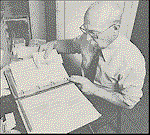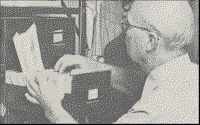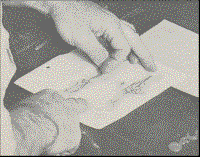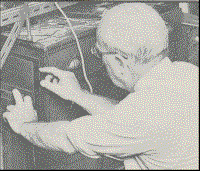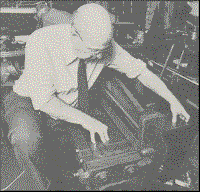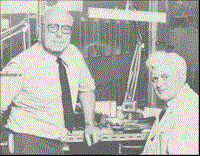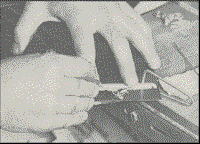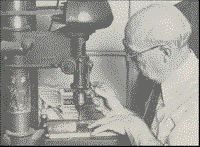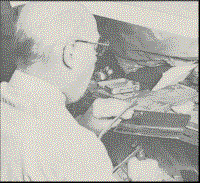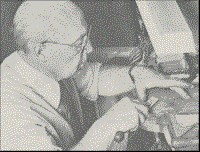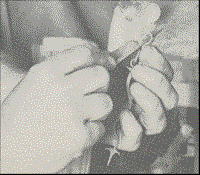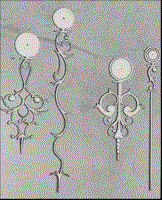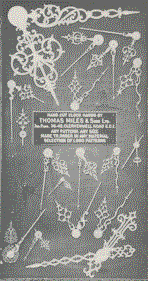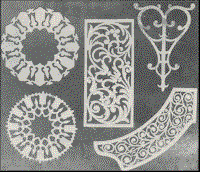|
THREE GENERATIONS OF
'SAW PIERCERS'
Table of contents:
Mr.
Miles provided a little more family history to add to that previously
published. His grandfather, C. R. Miles, shared a workshop at 272 St Johns
Street with his sister (the lady with the black silk dress) and his
brother H. W. Miles. Mr. Miles father started work full time in his father’s workshop in 1906 and took over as sole proprietor upon the death of his father in 1914. During the 1914—18 war among various war work he made the exhaust manifolds for the engine of the S.E. 5 fighter aeroplanes, by saw piercing four holes into a plate and brazing in the four stub exhaust pipes. At the end of the war he worked as an outworker for the silver trade — taking over what had previously been the work of his aunt, i.e. sugar dredger tops, salt and pepper pots, tray galleries etc. During this time he had a workshop at 53 Wynyatt Street as also had Charles Hobson (Clocks, May 1979) his boyhood friend.
Clock
hands featured prominently in the business activities at this time and
many of the patterns held by Mr. Miles today originated from his father.
His pattern books hold to date some 1,200 different examples. Obviously
any design can be reproduced either from existing patterns, customer’s
photo graphs, drawings or rubbings. Odd hands can be supplied to match its
fellow. Other items made to special order include clock case furniture —
side, arch and corner frets as well as special rack and pallet blanks. A sequence of PHOTOGRAPHS demonstrating the making of clock hands.
A PATTERN BOOK HOLDING SOME 1200 DIFFERENT EXAMPLES. Having received customers order in the form of a rubbing of required pattern, Mr. Miles refers to his book of existing patterns. Finding that he already has the template for this pattern in stock the reference number is noted. The envelope containing the relevant template is recovered from stock. Template is matched against customer’s rubbing as final check. Any adjustment as to exact size can easily be carried out. A MATERIAL SELECTION AND PREPARATION Correct material – brass, mild steel or carbon steel of the correct gauge is selected. Material is guillotined to a manageable size.
|
After coating the surface with marking out fluid, the template is clamped into position and the outline is scribed ( one of the best scribes is made up from an old Victorian hatpin) . A small hole is drilled preliminary to the piercing being commenced. Mr. Miles commences sawing around the outline of the hand. After the saw piercing is completed, finishing begins. Finally the interior surfaces are finished with needle
files. This ultimate degree of finish is carried out to specific order.
Usually the hands are supplied for the customer to finish himself. SOME FINISHED
PRODUCTS Some examples of finished work. Showcase illustrating some examples of patterns supplied in the past. Examples of other types of work i.e. frets, skeleton clock dials, frames carried out by Mr. Miles.
|


